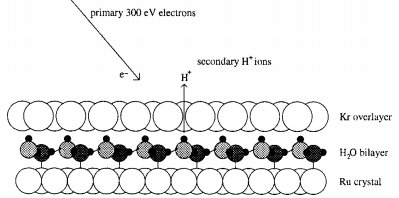Transmission of low energy (< 10 eV) H+ and D+ ions through ultrathin rare gas films
| Reviews and Highlights | Quantum Science | Molecular and Soft-matter | Ultrafast Nano-optics and Nanophotonics | Mineralogy and Geochemistry |
|---|
Markus B. Raschke and Theodore E. Madey
Phys. Rev. B 53, 15832 (1998).
DOI PDF

The transmission of low-energy (≤10 eV) H+ and D+ ions through ultrathin films of Kr and Xe has been studied to address the underlying scattering and charge-transfer processes. The ions are produced by means of electron stimulated desorption ͑ESD͒ from a water-bilayer covered (H2O or D2O) Ru(0001) surface. Their yield as a function of overlayer film thickness is measured using a digital time-of-flight electron stimulated desorption ion angular distribution detector. Film thicknesses are determined using thermal desorption spectroscopy. The small structural difference of the H2O compared to the D2O film on Ru affects the shape of the rare-gas thermal-desorption spectra. About 10% of the ESD ions are transmitted through 2 ML of Kr or Xe with no significant difference in the transmissivity of H+ and D+ . The attenuation is discussed in terms of elastic scattering and charge-transfer neutralization processes.
